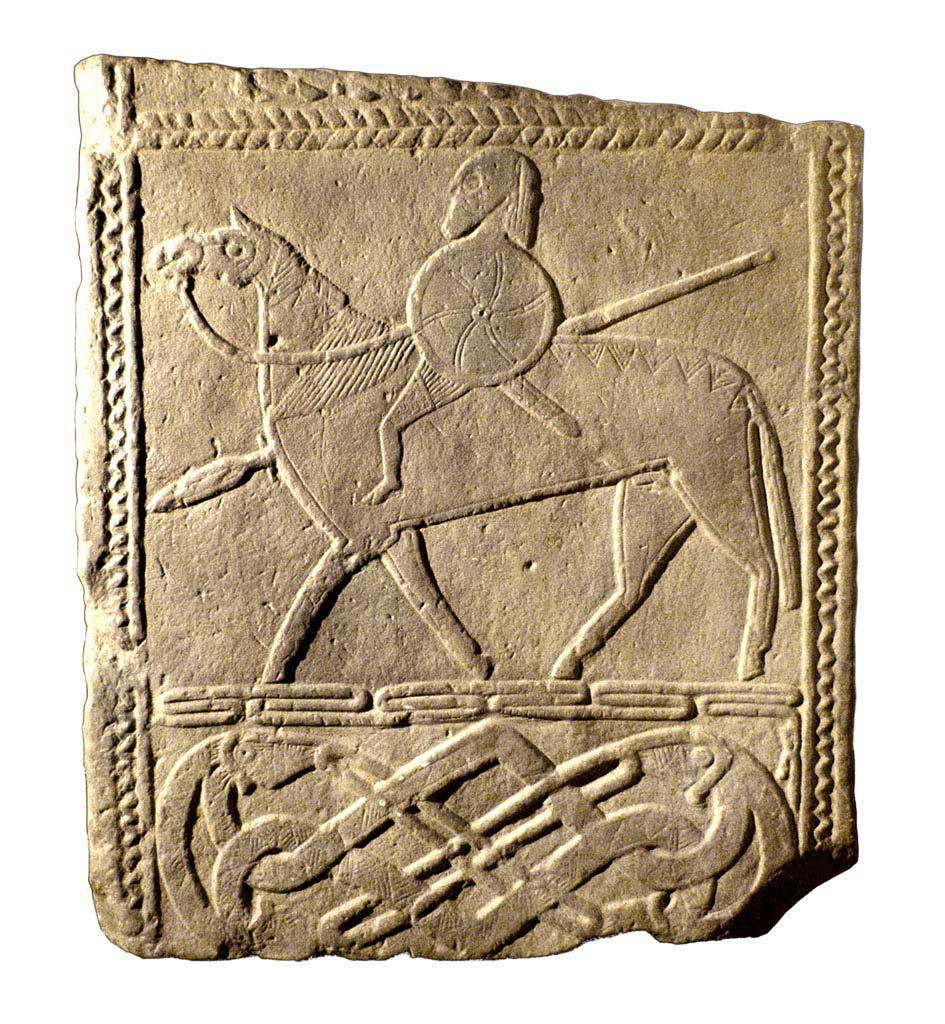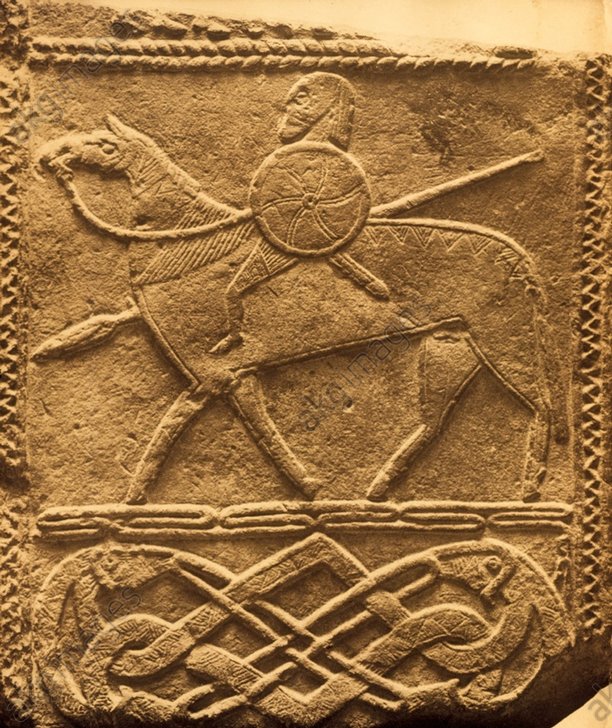Amazon Audible Gift Memberships

Try Amazon Audible Premium Plus and Get Up to Two Free Audiobooks
The Hornhausen Stone
Germanic or Slavic Cavalryman on a Gravestone, c.700AD
Magdeburg region, Saxony, Germany

Rider stone from Hornhausen (MLU Halle-Wittenberg)
Image source: The unknown god

Stone with horseman from Hornhausen (Saxony).
Part of a gravestone, 1st half of the 7th century.
Sandstone, 78 × 66cm.
Found 1874 nr. Hornhausen (Ochsersleben region), Saxon-Frankish burial field.
Halle an der Saale, Museum.
Source: akgimages
Referenced on p.3, The Age of Charlemagne (Men-at-Arms 150) by D.Nicolle, A.McBride
This gravestone of around 700 AD from the Magdeburg region shows the simple weaponry, sword, spear and shield, common to both Germans and Slavs in this frontier region. (Landesmuseum für Vorgeschichte, Halle)
BARBARIAN HORSEMAN
Contemporary depictions of barbarian soldiers are rare.
This grave stele was found in Hornhausen, Germany, and has been dated from the fourth to the seventh century.
The stele shows a barbarian cavalry soldier, probably a Frank—as he is portrayed wearing long hair, a symbol of nobility among that barbarian tribe.
He wears a helmet with large cheek-pieces and a distinct nasal.
Most likely it is a spangenhelm, although this cannot be determined from the weathered sculpture.
A decorated shield is also clearly portrayed, large, round, and with a distinct boss and rim—probably iron.
Body armor is not depicted, although the decorated garment on the thigh may indicate that he is wearing armor similar to the lorica segmentata.
Two weapons are visible.
The soldier holds a spear with a long, wide, and thick head in his right hand.
A sword is attached to the soldier’s left side; the scabbard has a clear rim and chape.
The grave stele is currently in the Landesmuseum, Halle, Germany.
Source: p.226, Medieval Weapons: An Illustrated History of Their Impact eds. Kelly DeVries & Robert D. Smith (2007)
Merovingian Cavalry 7th-8th Century in Armies of the Dark Ages 600-1066 by Ian Heath, perhaps based on this funerary stele.
See also The Franks Casket / The Auzon Casket, Anglo-Saxon, early 8th century, British Museum
Fresco of the Crucifixion from Santa Maria Antiqua, 741–52AD, Rome, Italy
7th Century Illustrations of Costume and Soldiers


